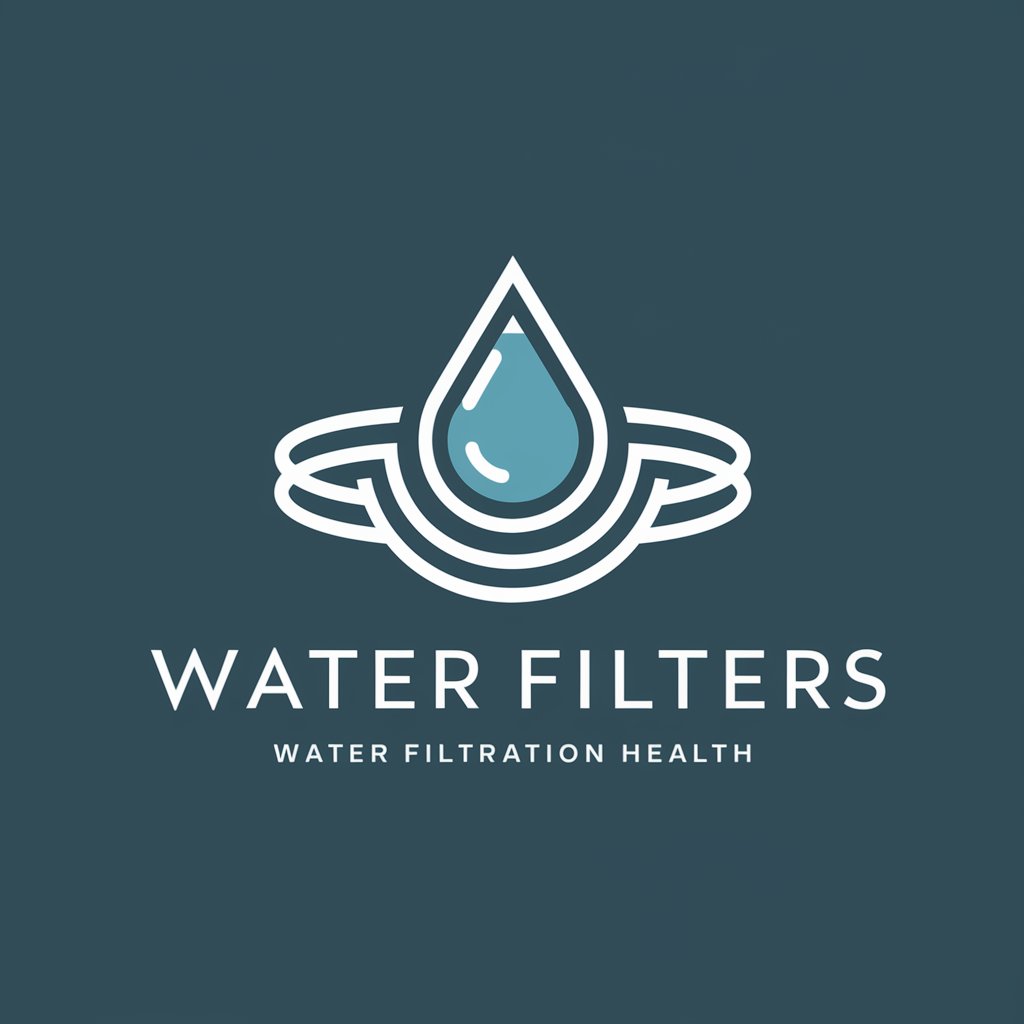Water Filters - Water Filtration Guide

Welcome! Let's find the perfect water filtration solution for you.
Purify Your Water with AI Insight
What are the best water filtration systems for removing lead?
Can you explain the differences between reverse osmosis and activated carbon filters?
What are the top brands for under-sink water filters?
How often should I replace my refrigerator water filter?
Get Embed Code
Understanding Water Filters: Purification for Health and Safety
Water filters are devices designed to remove impurities from water by means of a physical barrier, chemical process, or biological process. Their primary design purpose is to provide clean, safe drinking water free from contaminants such as bacteria, viruses, sediment, and chemicals. Water filters can range from simple charcoal filters that improve taste and remove basic contaminants, to complex reverse osmosis systems capable of purifying water at the molecular level. For example, a basic activated carbon filter may be used in a household pitcher to remove chlorine and improve taste, whereas a more advanced multi-stage reverse osmosis system installed under the kitchen sink can remove a wide range of contaminants, including fluoride, lead, and bacteria, providing safe drinking water directly from the tap. Powered by ChatGPT-4o。

Core Functions of Water Filters
Sediment Removal
Example
Mechanical filters
Scenario
Used in homes with older plumbing systems to remove particles like sand, dirt, and rust that can enter the water supply from corroded water pipes.
Chemical Reduction
Example
Activated carbon filters
Scenario
Commonly found in refrigerator and pitcher filters, these are used to improve taste and odor by removing chlorine and volatile organic compounds (VOCs) from tap water.
Pathogen Elimination
Example
Ultraviolet (UV) filters
Scenario
Employed in areas where the water supply may be contaminated with bacteria, viruses, or protozoa. UV filters use UV light to kill or inactivate harmful microorganisms, ensuring the water is safe to drink.
Hardness Reduction
Example
Water softeners
Scenario
Utilized in regions with hard water to remove minerals like calcium and magnesium, which can cause scale buildup in plumbing and appliances, extending their lifespan and improving water quality.
Heavy Metal Removal
Example
Reverse osmosis systems
Scenario
Ideal for areas concerned with pollution or aged infrastructure. These systems are capable of removing contaminants such as lead, arsenic, and mercury, offering a high level of purification for drinking water.
Who Benefits from Water Filters?
Households with Contaminated Water Supply
Families living in areas with known water quality issues, such as high levels of lead, chlorine, or other contaminants, can significantly benefit from using water filters to ensure their drinking water is safe.
Health-Conscious Individuals
People who are particularly sensitive to chemicals, have weakened immune systems, or are concerned about the long-term health impacts of contaminants in their drinking water will find water filters essential for their well-being.
Outdoor Enthusiasts and Travelers
Those who frequently hike, camp, or travel to areas where the water quality cannot be guaranteed. Portable water filters and purifiers offer a practical solution for accessing safe drinking water from natural sources or in different countries.
Homeowners Concerned with Appliance Lifespan
Individuals in areas with hard water who wish to protect their home appliances from scale buildup and extend their lifespan. Water softeners and filters that reduce mineral content can prevent damage to washing machines, dishwashers, and water heaters.

Using Water Filters: A Step-by-Step Guide
Step 1
To start exploring water filtration options, begin with a no-cost trial at yeschat.ai, granting immediate access without the need for ChatGPT Plus or any login requirements.
Step 2
Identify your water filtration needs by analyzing your water quality. Consider factors such as taste, odor, and potential contaminants like lead, chlorine, or bacteria.
Step 3
Select the appropriate type of water filter based on your needs. Options range from pitcher filters, faucet-mounted models, under-sink systems, to whole-house units.
Step 4
Install the water filter according to the manufacturer's instructions. This may involve attaching it to a faucet, connecting it under the sink, or integrating it into your home's plumbing system.
Step 5
Maintain your water filter by regularly replacing filter cartridges, cleaning the system, and monitoring water quality to ensure optimal performance and safety.
Try other advanced and practical GPTs
Listing Wizard
Maximize Your Home's Value with AI

Book Insighter
Empowering Readers with AI-Driven Book Insights

Editorial Eye 头条
Elevate Your Writing with AI Insights

Scholar Engineer
Empowering Academic Excellence with AI

GuruHotel
Empowering Hoteliers with AI-Driven Insights

Vision Engineer Expert
Empowering vision with AI-driven solutions

图谱分析机器人ZT
Deciphering Spectra with AI Precision

Site Reviewer
Empowering website enhancements with AI insights

ViewSonic EdTech Advisor
Empowering Education with AI

Meme Master
Elevate humor with AI-powered memes

REI Property Pro
Empowering Your Real Estate Investments with AI

AppMole Social Media Hook Generator GPT
Elevate Your Content with AI-Powered Hooks

Frequently Asked Questions About Water Filters
What contaminants can water filters remove?
Water filters can remove a variety of contaminants, including chlorine, lead, mercury, sediments, and bacteria, depending on the filtration technology used.
How often should I replace my water filter?
Replacement intervals vary by filter type and water usage, but it's generally recommended every 2 to 6 months for most household filters to ensure effectiveness.
Can water filters improve the taste and odor of tap water?
Yes, many water filters are designed to remove substances that cause unpleasant taste and odor, such as chlorine and sulfur compounds, significantly improving water quality.
Are there water filters that can handle well water?
Yes, there are filters specifically designed for well water, equipped to remove sediment, iron, and other common contaminants found in well water sources.
How do I know which type of water filter is right for me?
The best filter for you depends on your specific water quality needs and goals. Testing your water for contaminants can help guide your choice, as can considering factors like installation space and maintenance preferences.
